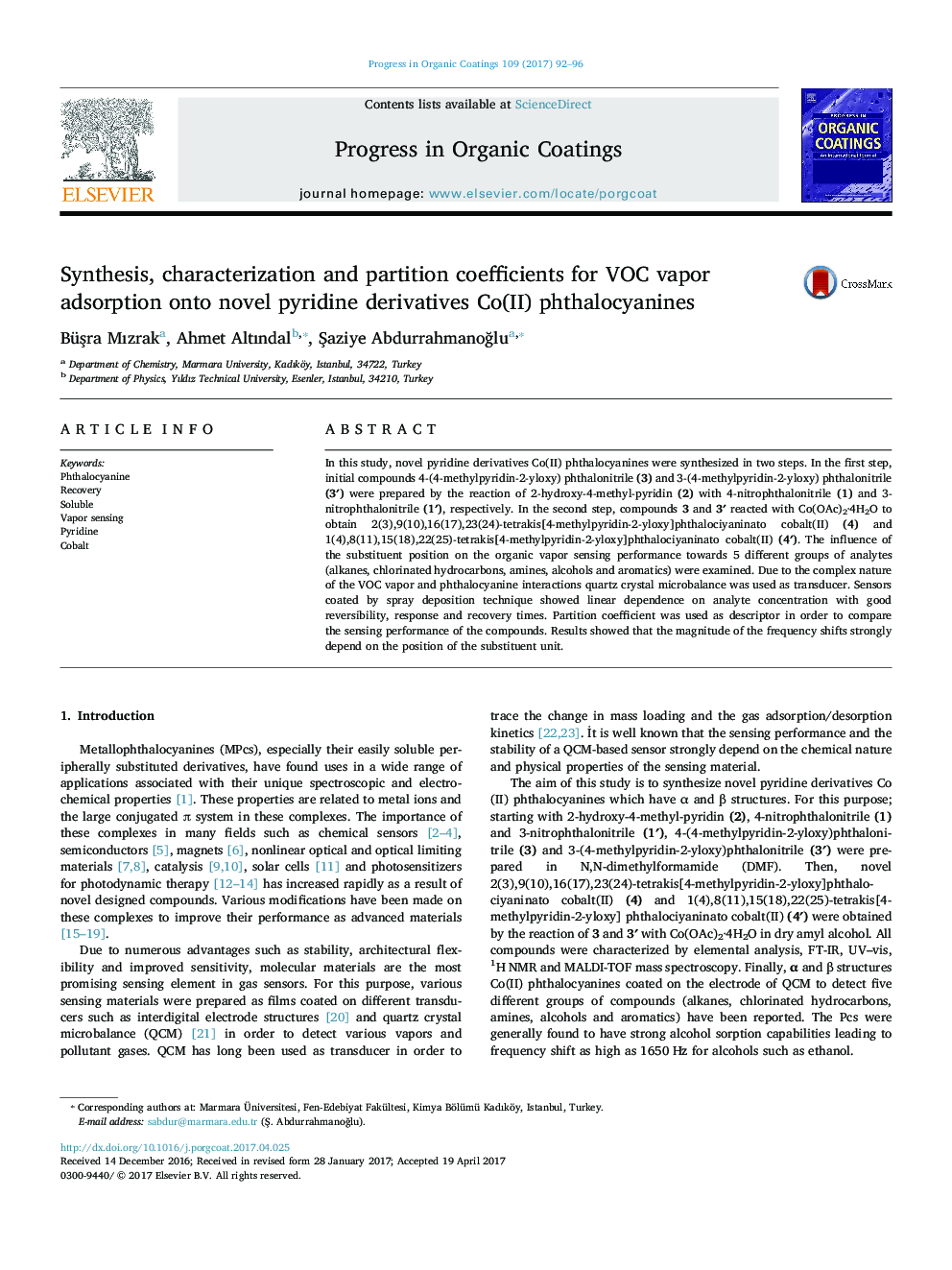| Article ID | Journal | Published Year | Pages | File Type |
|---|---|---|---|---|
| 4999357 | Progress in Organic Coatings | 2017 | 5 Pages |
Abstract
In this study, novel pyridine derivatives Co(II) phthalocyanines were synthesized in two steps. In the first step, initial compounds 4-(4-methylpyridin-2-yloxy) phthalonitrile (3) and 3-(4-methylpyridin-2-yloxy) phthalonitrile (3â²) were prepared by the reaction of 2-hydroxy-4-methyl-pyridin (2) with 4-nitrophthalonitrile (1) and 3-nitrophthalonitrile (1â²), respectively. In the second step, compounds 3 and 3â² reacted with Co(OAc)2·4H2O to obtain 2(3),9(10),16(17),23(24)-tetrakis[4-methylpyridin-2-yloxy]phthalociyaninato cobalt(II) (4) and 1(4),8(11),15(18),22(25)-tetrakis[4-methylpyridin-2-yloxy]phthalociyaninato cobalt(II) (4â²). The influence of the substituent position on the organic vapor sensing performance towards 5 different groups of analytes (alkanes, chlorinated hydrocarbons, amines, alcohols and aromatics) were examined. Due to the complex nature of the VOC vapor and phthalocyanine interactions quartz crystal microbalance was used as transducer. Sensors coated by spray deposition technique showed linear dependence on analyte concentration with good reversibility, response and recovery times. Partition coefficient was used as descriptor in order to compare the sensing performance of the compounds. Results showed that the magnitude of the frequency shifts strongly depend on the position of the substituent unit.
Related Topics
Physical Sciences and Engineering
Chemical Engineering
Process Chemistry and Technology
Authors
BüÅra Mızrak, Ahmet Altındal, Åaziye AbdurrahmanoÄlu,
